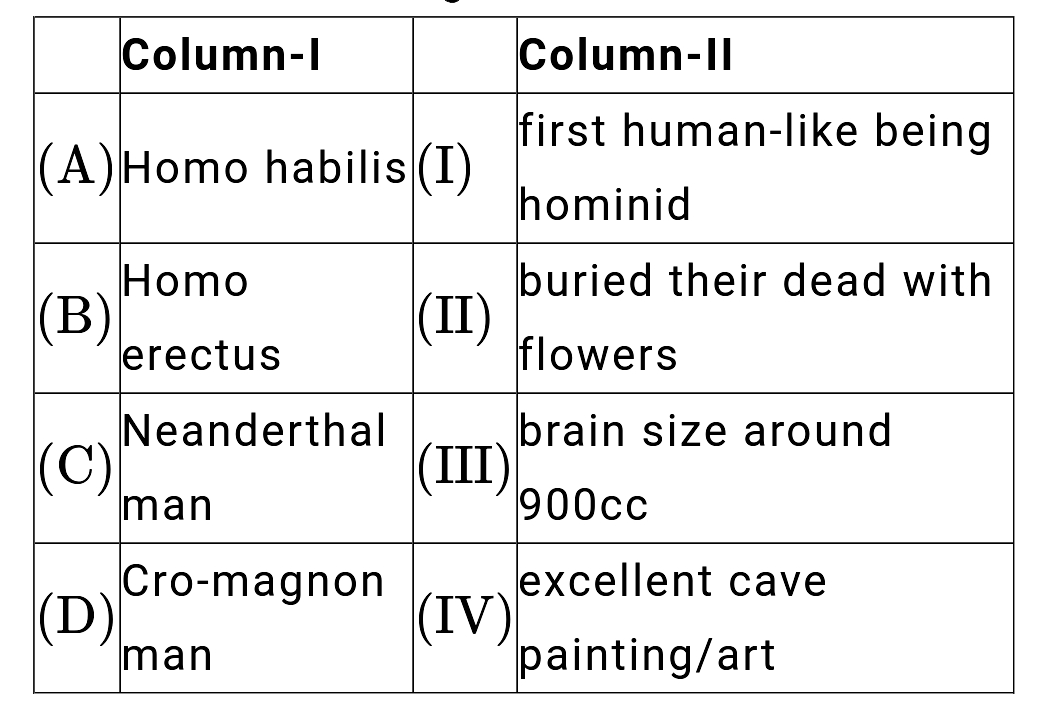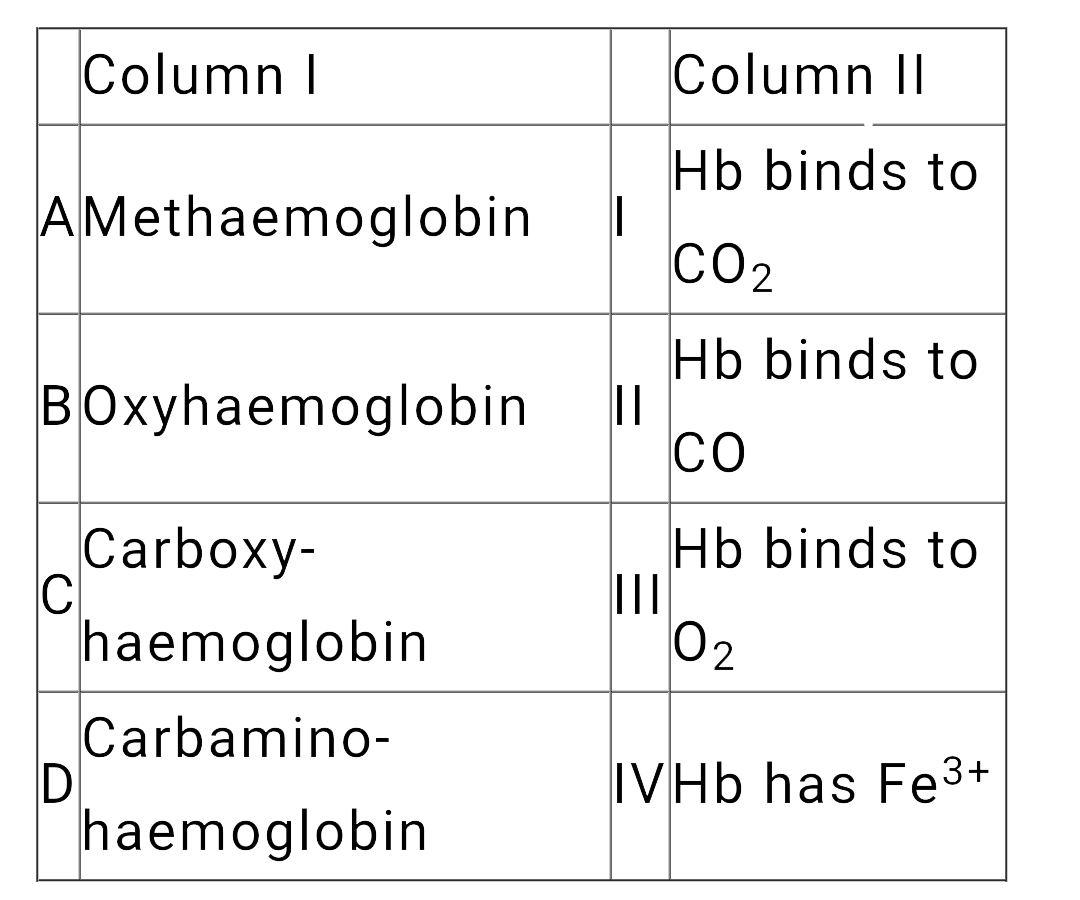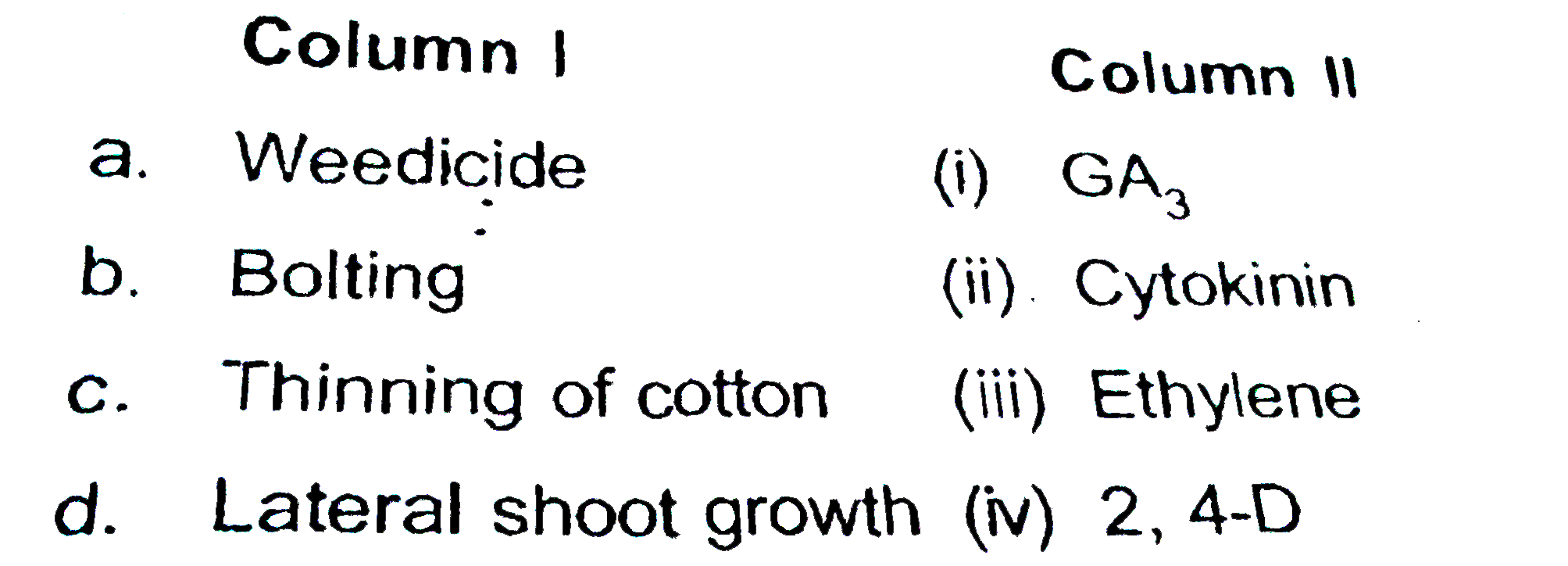Match the following columns:
Column IColumn IIa.Oxylophytes(i)Calcium-rich soilsb.Eremophytes(ii)Waste landc.Chrysophytes(iii)Deserts, steppesd.Calciphytes(iv)Acidic soils
a (i), b (ii), c (iii), d (iv)
a (i), b (iii), c (iv), d (ii)
a (iv), b (iii), c (ii), d (i)
a (iv), b (iii), c (i), d (ii)
The correct Answer is:C
To solve the matching question, we need to correctly pair the items from Column I with those from Column II based on the characteristics of each type of plant. Let's analyze each of the plants listed in Column I and find their corresponding environments in Column II.
1. Identify Oxylophytes:
- Oxylophytes are plants that thrive in acidic soils.
- Match: (a) Oxylophytes → (iv) Acidic soils.
2. Identify Eremophytes:
- Eremophytes are plants that grow in arid environments such as deserts and steppes.
- Match: (b) Eremophytes → (iii) Deserts, steppes.
3. Identify Chrysophytes:
- Chrysophytes are a type of algae that can grow in wasteland areas.
- Match: (c) Chrysophytes → (ii) Waste land.
4. Identify Calciphytes:
- Calciphytes are plants that prefer calcium-rich soils.
- Match: (d) Calciphytes → (i) Calcium-rich soils.
Final Matching:
- (a) Oxylophytes → (iv) Acidic soils
- (b) Eremophytes → (iii) Deserts, steppes
- (c) Chrysophytes → (ii) Waste land
- (d) Calciphytes → (i) Calcium-rich soils
Summary of Matches:
- a → iv
- b → iii
- c → ii
- d → i
- Oxylophytes are plants that thrive in acidic soils.
- Match: (a) Oxylophytes → (iv) Acidic soils.
- Eremophytes are plants that grow in arid environments such as deserts and steppes.
- Match: (b) Eremophytes → (iii) Deserts, steppes.
- Chrysophytes are a type of algae that can grow in wasteland areas.
- Match: (c) Chrysophytes → (ii) Waste land.
- Calciphytes are plants that prefer calcium-rich soils.
- Match: (d) Calciphytes → (i) Calcium-rich soils.
- (a) Oxylophytes → (iv) Acidic soils
- (b) Eremophytes → (iii) Deserts, steppes
- (c) Chrysophytes → (ii) Waste land
- (d) Calciphytes → (i) Calcium-rich soils
- a → iv
- b → iii
- c → ii
- d → i
Topper's Solved these Questions
- ORGANISMS AND POPULATIONSBOOK - CENGAGE BIOLOGY ENGLISHCHAPTER - ORGANISMS AND POPULATIONSEXERCISE - ARCHIVES (Choose the correct options)
29 Videos
- MICROBES IN HUMAN WELFAREBOOK - CENGAGE BIOLOGY ENGLISHCHAPTER - MICROBES IN HUMAN WELFAREEXERCISE - ARCHIVES
26 Videos
- REPRODUCTION IN ORGANISMS BOOK - CENGAGE BIOLOGY ENGLISHCHAPTER - REPRODUCTION IN ORGANISMS EXERCISE - ARCHIVES
8 Videos
Similar Questions
Match the following columns I with column II.

View SolutionMatch the following column-I and Column-II-:

View SolutionMatch the following (Column I with Column II)

View SolutionMatch the following (Column -I and Column II)

View SolutionMatch the following column I with column II :

View SolutionMatch the following Column I with column II:

View SolutionMatch the following (Column I with Column II).

View SolutionMatch the following (column-I with column-II)

View SolutionMatch the following (column-I with column-II)

View SolutionMatch the following (column-I with column-II)

View Solution
